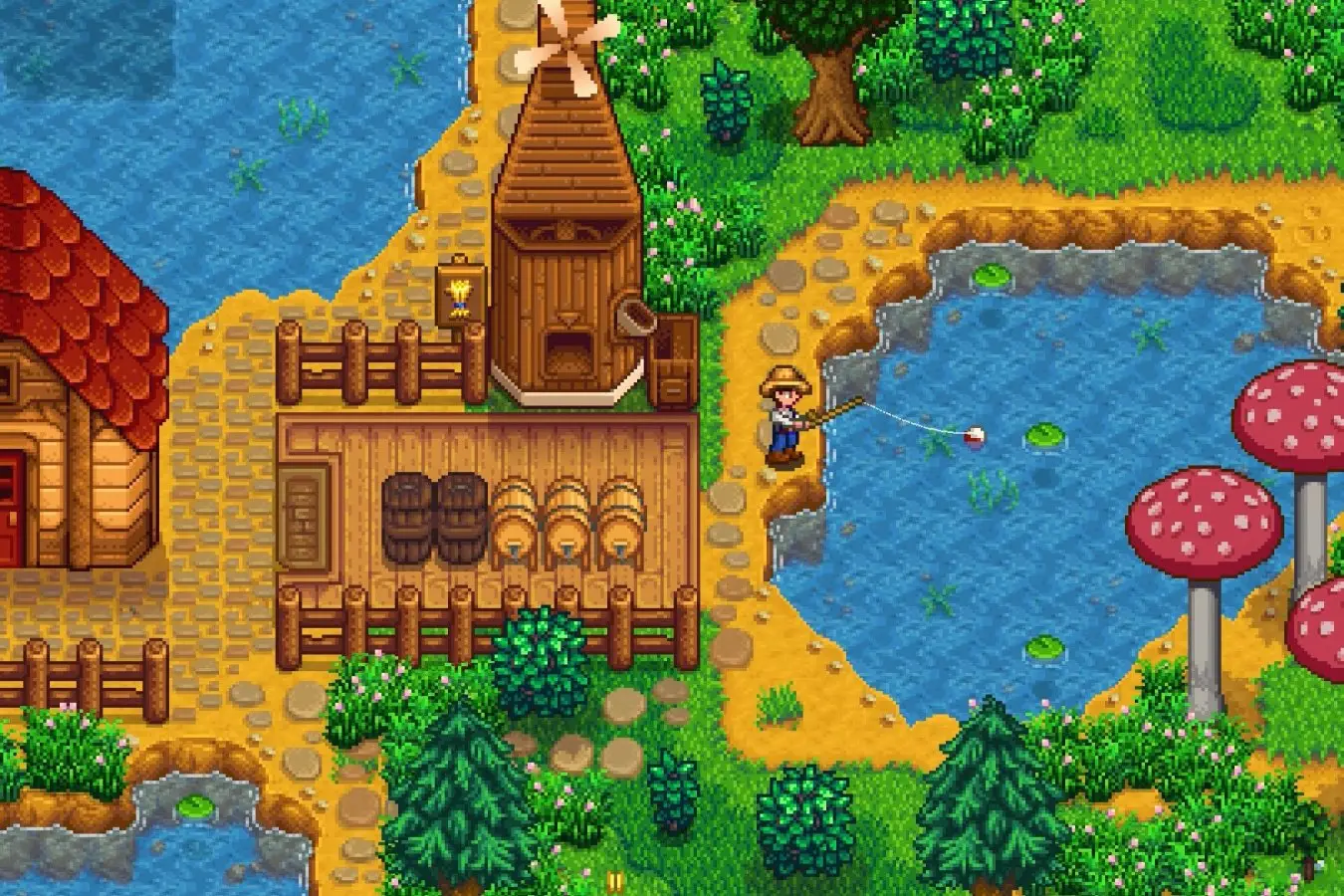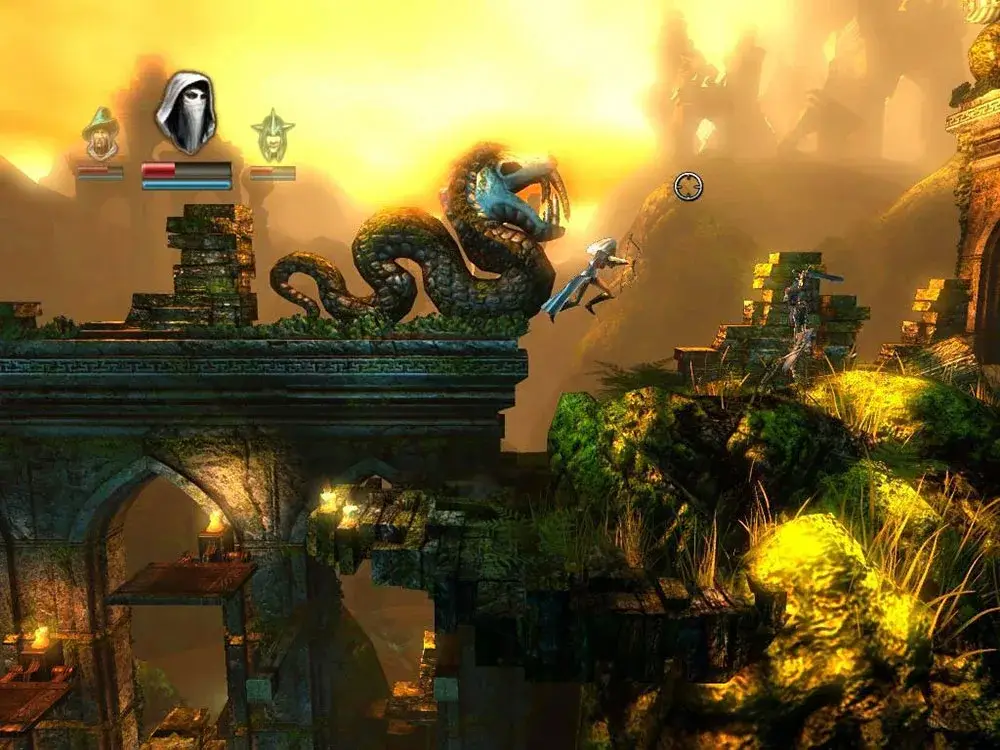2D or 3D graphics in games? This question inevitably arises in discussions about platformers — a genre where jump precision and clarity of perception are everything. The choice of dimension — is not just a visual decision; it fundamentally affects gameplay, controls, level design, and even game difficulty. What influences this choice and how does it shape our gaming experience? Let’s dive into the world of two- and three-dimensional platforming projects and explore their features.
The Evolution of Graphics in Platform Games: From 2D to 3D
Since the late 80s, the industry has built the aesthetics of platformers through pixel art. 2D graphics in games at that time used a limited palette but allowed for quick scene rendering and level building in just a few clicks.
The success of Super Meat Boy and Celeste in the 2010s solidified this approach. Levels were designed with surgical precision, and the artistic style supported the emotional tone of the narrative.

3D graphics in platform games came later, starting with the PlayStation era. The first attempts were angular. Only after 2015, with the advent of Unity and Unreal Engine, did small teams gain access to rendering levels like Ori and the Blind Forest — a visual paradise created in a 2.5D format.
Advantages of 2D: Precision and Rhythm
2D or 3D graphics in games determines how important frame control is. In 2D, all elements are easily readable, and collisions are mathematically predictable.
The platformer benefits from control. Sprites work faster, resource loading is easier, and the budget is lower.
Pros of 2D:
- frame-to-frame control of animation;
- simple implementation of parallax;
- more predictable interaction with the environment;
- ease of adaptation for mobile devices;
- cheaper to produce and test.
Cuphead, for example, showed how hand-drawn art creates deep engagement. The visual style is reminiscent of 30s painting, but the engine is pure platforming calculation.
Disadvantages of 2D: Limitations of Scale
The choice between 2D or 3D graphics in games must consider long-term goals. 2D limits vertical camera movement, creates repetition in scenery, and requires meticulous work with perspective.
Cons of 2D:
- inability to create complex angles;
- limited space for exploration;
- increased demands on level design;
- dependence on artistic style;
- repetition of backgrounds without procedural generation.
Hollow Knight brilliantly circumvented these limitations through deep world architecture, but this significantly increased production times.
Advantages of 3D: Flexibility and Scale
The question of what to choose — 2D or 3D graphics for a game — becomes particularly acute when trying to scale the universe.
3D opens up volume, depth, and freedom. Levels can be rotated, distorted, adapted for VR, or cameras with dynamic angles.
Pros of 3D:
- volumetric worlds and complex geometry;
- dynamic light sources and shadows;
- adaptation for cinematic scenes;
- possibility of integrating procedural generation;
- ease of scaling to other genres.
Pumpkin Jack and Blue Fire are examples of projects where the platformer is presented through 3D while maintaining the spirit of the genre and gaining visual flexibility.
Disadvantages of 3D: Resources and Complexity
2D or 3D graphics in games require consideration of budget and resources. 3D is a costly path. Artists, animators, technology — everything becomes more complicated. Models, collisions, lighting optimization.
Cons of 3D:
- increased hardware load;
- higher budgets and timelines;
- complexity of testing animations;
- need for a highly skilled team;
- risk of reducing gameplay readability.
Even a project like Demon Turf with its unconventional mix of 2D sprites in 3D locations addressed the readability issue through strict camera positioning.
2D or 3D Graphics in Games: Practical Comparison
The visual style of a game not only defines its aesthetics but also dictates its mechanics. In 2D, it is easy to control jump precision, enemy speed, and platform behavior. An error in calculation is almost impossible — every pixel is under control.
3D requires different mathematics. Objects move in space, the camera can obstruct the view, and platforms can literally “disappear from underfoot.” It requires tying to the frame rate, adjusting the field of view, and accounting for character movement inertia.
Celeste uses 2D for hardcore platforming, where every mistake is a player choice. Pseudoregalia builds a 3D world where platforms can tilt, disappear, and react to touch.
Specific Examples: When It Worked Perfectly
Statistics of successful platformers show: both graphics work when implemented wisely.
Examples of 2D games:
- Dead Cells — a roguelike with procedural generation and a fast combat system.
- Braid — a platformer where time is controlled manually.
- Super Meat Boy — pure mechanics without visual excess.
Each project proves how 2D helps maintain control clarity and gameplay tempo.
Examples of 3D games:
- Pumpkin Jack — a visual fairy tale on the Unreal Engine.
- Blue Fire — a combination of platforming and combat systems in empty volumetric halls.
- Demon Turf — a mix of 2D artistry and 3D gameplay with innovative jump control.
The format of 2D or 3D graphics in games works if the concept considers its physics, rhythm, and visual readability.
How to Make the Right Decision
The choice between 2D or 3D graphics requires clear calculation — intuition and tastes do not replace analysis. The chosen form depends on the budget, tasks, and technical capabilities of the team.
2D is suitable when resources are limited: projects up to $50,000, small teams of up to three people, and a focus on mobile devices. It speeds up the development cycle and reduces the load. It is excellent for hardcore gameplay or short gaming sessions where precision and simplicity are important.
3D is advisable with an expanded budget of $100,000 or more, the presence of five or more specialists, and a focus on PC and console platforms. It conveys graphical depth and is suitable for projects emphasizing atmosphere, emotions, and prolonged immersion. This format enhances narrative, reveals the story, and creates a sense of presence.

Two-dimensional or three-dimensional visual formats affect the architecture of the project, timelines, and audience impressions. There is no universal template — only precise matching of goals and available resources helps.
2D or 3D Graphics in Games: Conclusions
2D or 3D graphics in games is not the main question. The goal and idea are more important. The format serves as a means, not an end. Cuphead impresses visually without a third dimension. Blue Fire is impossible outside of 3D dynamics. Hollow Knight builds depth through design. Pumpkin Jack captures atmosphere. The decision should stem from the task: to engage, surprise, or retain.
 en
en  de
de  ar
ar  es
es  nl
nl  hi
hi  fr
fr  it
it  pt
pt  el
el 













